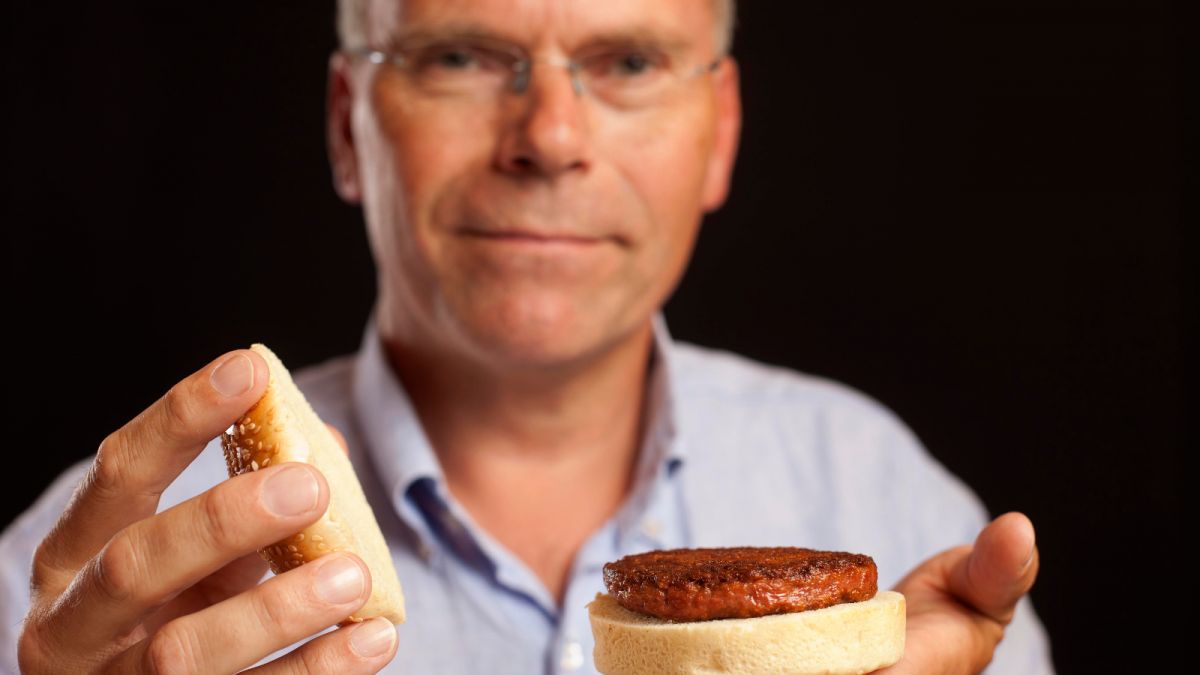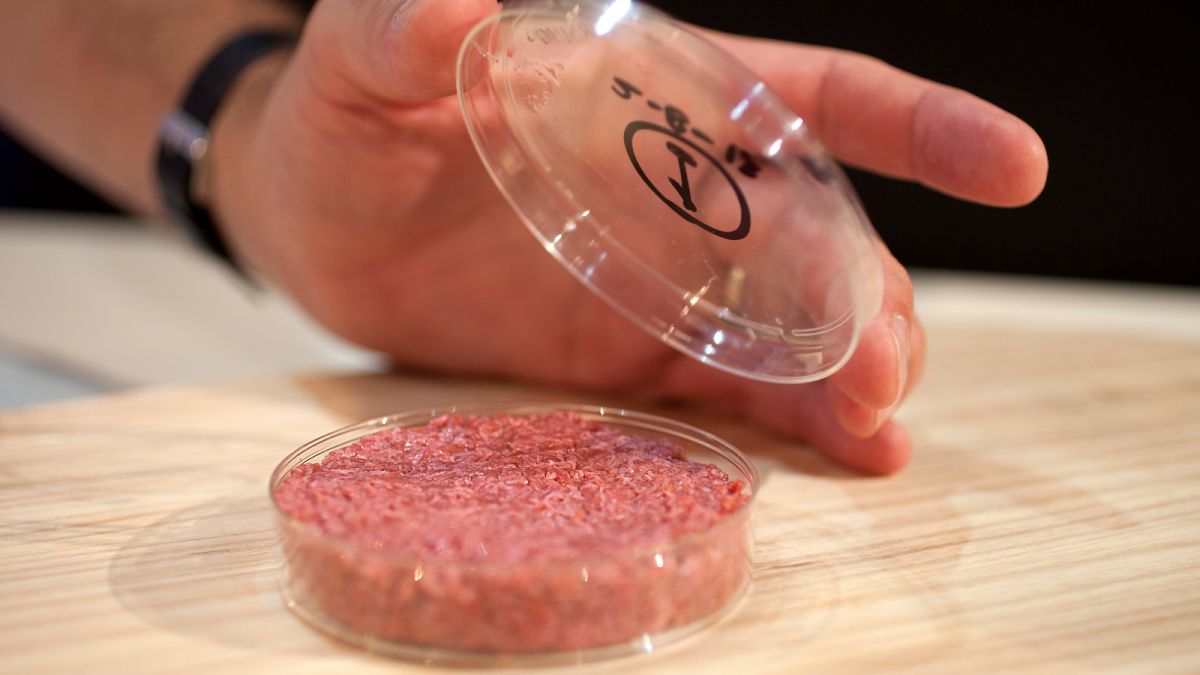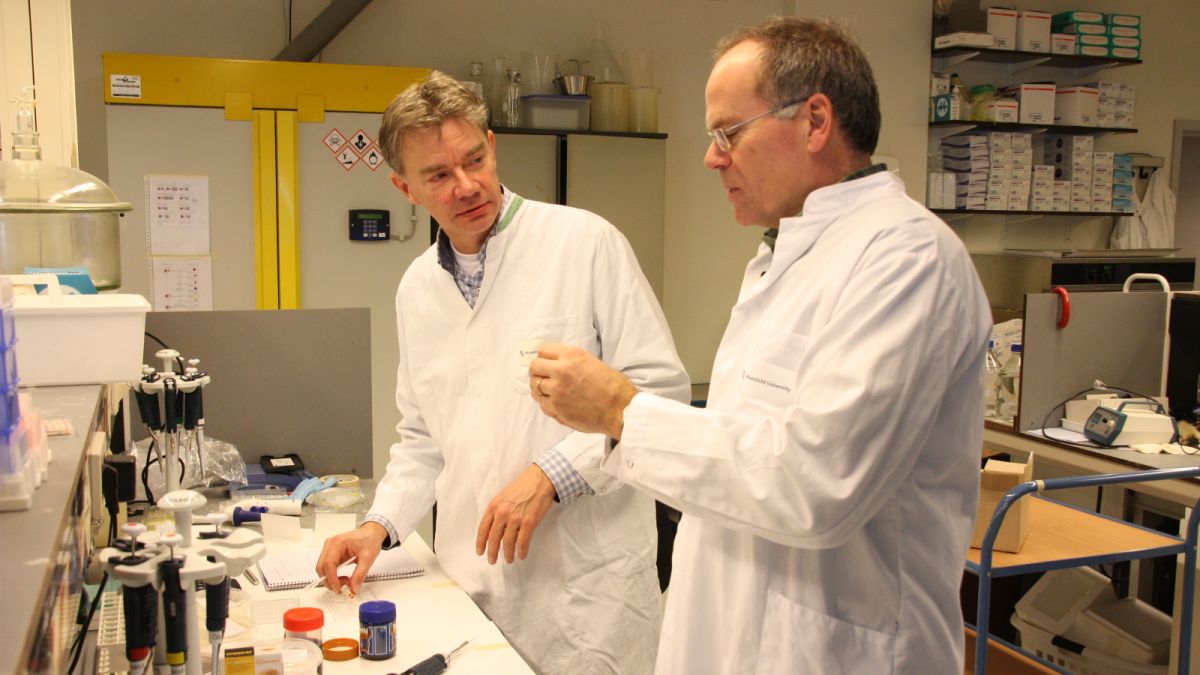
The story of the lab-made burger
Imagine you’re faced with two hamburgers. They look identical – and then you’re told that one was grown in a lab, and the other was created using standard practices. It’d be a pretty easy decision over which to eat, right?
Well, what if you were then told the lab-grown burger (known as ‘cultured meat’) could help save the planet, improve animal welfare, and maybe even extend your lifespan?
According to experts, the way we currently farm livestock is seriously damaging the environment and putting the health of humans and animals at risk. Growing cultured meat in a lab environment is being touted as the solution to these problems, and there are lots of signs it could become a viable food source within a decade.
But before it’s a long way from being the solution some are vaunting it as – there are some serious challenges to overcome.
Is lab-made meat real?
It was only in 2013 that the first cultured meat burger was grown in a lab. Professor Mark Post took stem cells from the shoulder of a cow and then grew 20,000 strands of muscle to produce enough meat to form a burger – and the process took three months and cost £220,000. (Around $320,000 / AU$450,000).
“The benefits are a smaller carbon footprint, less greenhouse gas emissions, less resources (vegetable proteins) required and animal welfare benefits,” Prof. Post told techradar. “We imagine that the total number of cows [needed to provide the world’s meat] comes down from 1.5 billion to 30,000.”

That statistic alone is enough to impress many, but there are problems to overcome. Professor Post sees “scaling up [production] and getting regulatory approval” as the main challenges. And that’s before getting to the questions most meat-eaters would have: what about taste, nutrition, and price?
“Eventually the tissue will be the same as current meat products, so nutrition and taste will be equal. We are not quite there yet though,” says Prof. Post. “Price is still high and the initial product will be expensive, ten times more expensive than now.”
However, he imagines it might only take another couple of years after release for cultured meat to reach parity with farmed meat on price, assuming projections are matched and people actually buy it.
Why is it so expensive?
The first cultured beef burger was largely funded by Google co-founder, Sergey Brin, and a lot of the headlines focused on the fact that, at £220,000, it was the world’s most expensive burger.
However, focusing on that price might be missing the point on something that could offer multiple benefits; consider that the average cost for a new medicine to be developed right now is £1.2 billion, according to the Office of Health Economics.
There are also multiple new avenues beyond just replacing burgers. Memphis Meats recently unveiled its first lab-grown meatball and estimated the cost of one pound of ground beef at $18,000. But, what’s being overlooked when we focus on the high costs of cultured meat production, is the cost of the farmed livestock we rely upon at the moment.
Animal farming currently uses almost one third of all the land in the world that isn’t covered in ice. A full 70% of the land that’s actually fit for agriculture is covered in crops to be fed to animals. Animal farming uses 8% of the global water supply and produces 18% of the world’s greenhouse gases.

Cultured meat production could achieve the same output with 55% of the energy, 1% of the land, 4% of the water, and it would produce just 4 percent of the greenhouse gas emissions, according to the study, Environmental Impacts of Cultured Meat Production.
“The price of the meat we eat just now will only go up as time goes on and the price of cultured meat can only come down,” Isha Datar, CEO of New Harvest, told techradar.
New Harvest is a non-profit organisation whose goal is to stimulate a new economy of animal products made without animals.
It’s helped fund research into cultured steak at King’s College London, and been instrumental in starting companies like MuuFri, which produces milk without cows, Clara Foods, which produces egg whites without hens, and Pembient, which is making rhino horns without the need to kill rhinos to try to circumvent the illegal wildlife trade.
Saving the world
Animal welfare and environmental concerns may be the main driving forces behind cultured meat, but there are also significant health issues to consider.
“In terms of public health problems associated with meat production, people think of heart disease,” Datar told us, “But what’s more frightening is the uncontrollable epidemic viruses that emerge from farming animals close to humans, the outbreak of food-borne illness, and the issue of antibiotic resistance.”
The meat industry is prone to disaster. Many will remember the mad cow disease and foot and mouth outbreaks in the UK in recent years which prompted panic and mass slaughters. Even more recently the avian flu outbreak led to mass culls of chickens.
“It’s difficult to contain disease with these huge animal populations,” explains Datar. “The problem becomes – how do you kill these animals fast enough?”
Then there’s the risk of being poisoned by the meat we eat. Multiple studies, such as this one from Consumer Reports, reveal potentially dangerous bacteria levels in meat through faecal matter contamination. All 458 pounds of beef it examined was contaminated.
“The sterile conditions cultured meat is grown in are much safer than the conditions under which meat is produced now,” says Datar.

Cultured meat also doesn’t need to be pumped full of antibiotics. There are growing concerns about the over-use of antibiotics in animal farming and the potential impact it may be having on human resistance. Antibiotics have rapidly extended our life expectancy; resistance could reverse that trend.
Is veganism a better alternative?
While many are pushing the possible benefits of cultured meat, there are understandably those who oppose it – even if they agree that the current method of animal farming is not sustainable.
“Promote veganism instead,” Dr Matthew Cole, Associate and Associate Lecturer at The Open University and former Chair of the Vegan Society, told techradar. “That’s the already-existing solution to exploiting animals that’s better for health, environment and of course for the animals themselves.”
The issue is veganism is a tough sell in a world where 90% of people eat meat.
“The IVM (in-vitro meat, or cultured meat) movement is generally quick to disparage veganism as ‘impossible’ from what I’ve read, which is obvious nonsense – ask any vegan,” Dr Cole argues. “What holds veganism back is the political and social environment, which we could change if we had the collective will.”
Dr Cole also believes that other social issues would be improved if eating meat was taken off the agenda:
“I’m also concerned that IVM means ceding control of food to corporations (who will surely step in if the technology ever proves viable),” he explains. “Veganism lends itself to community growing schemes, allotments, school projects, etc. rather than dependency on complex technology.”
Some of the opposition to cultured meat, and even the idea that there’s a “yuck” factor in eating something from the lab, is tied up with worry about our over-reliance on new technology. There’s also concern about genetic modification and what some scientists could do with the new method of food production, which will need thorough research and regulation to be considered a staple part of human intake.
However, Datar argues that some of this worry about what humans will be putting in their mouths is based on misconception: “What’s different is not the product. What’s different is the process to get there.”
Possibly beneficial alternatives to the status quo also tend to take a while to catch on, particularly if they’re expensive to develop, as a simple look at electric cars or renewable energy proves.
The existing meat industry hasn’t shown much interest so far, but once the scale issue is solved that will change. If there’s profit to be made, they’ll be there. The idea of a morally bankrupt conglomerate with a huge meat factory isn’t hard to picture, but it doesn’t have to go that way.
“My utopian vision for cultured meat is that there are lots of people producing it in the same way that there are a lots of people producing beer right now,” suggests Datar.
“There are still those huge breweries that are owned by gigantic companies, but there are also microbreweries and people who home brew. The general idea of brewing beer is not protected, but every individual recipe could be.”
The meat factory of the future, or “carnery” as Datar suggests, might not look dissimilar to a brewery, where it’s a more controlled setting to produce meat.
Years away?
How long before we can buy cultured meat? Professor Post thinks we’ll get there “four to five years down the line” and Memphis Meats CEO, Uma Valeti, recently outlined the brand’s plan to be in restaurants and high-end stores within three years and on supermarket shelves by 2021.
If we are to get there within the next five years, Datar believes it’s going to require a serious investment. Right now there are only a few people working on cultured meat development and funding is sparse.
“Because there’s so much media attention it seems like this is going to come along and science will save us and there’s a huge community of researchers working on it, but in fact it is not like that at all. We’re raising money in a philanthropic way so we can fund early stage research,” explains Datar.
“Our long term goal is working with governments to create funds for cellular agriculture.”
The pressure to find sustainable alternatives to the current setup can only grow and profit-driven private companies might not be the best way to get there – so it seems if the conditions are right and regulation used, governmental help might be possible.
Further research is definitely needed to find out if cultured meat could be the next major breakthrough, or to uncover more possible stumbling blocks before we rid the world of billions of cows.
So could carnivores be chowing down on lab-grown meat by 2030? It’s a distinct possibility – but even if all the hurdles are overcome there’s still a major exercise in convincing the meat-eating population that it’s fine to eat.
Source: techradar.com










































Saving the planet is a very realistic term to use. When diseases break out among farm animal populations, the impact to human life can be staggering. You paint with too broad of a brush. Sadists (I assume) by definition, get pleasure from destruction and pain. So "saving the world" as you put it, would pleasure sadists, which liberals are not. The hate for liberals by conservatives (I assume you are) is unwarranted. And yes, our lives do have an intrinsic meaning.
Statists not sadists. State – ists, people who think the answer to every problem is more government and less freedom. Tiring.
Everything for leftists, statists, and liberals is all about "saving the world". I think it's because their lives have no intrinsic meaning so they have to reach up to a cause bigger then themselves. Saying things like "save the world" makes them feel better about themselves. It's just tiring, stop it.